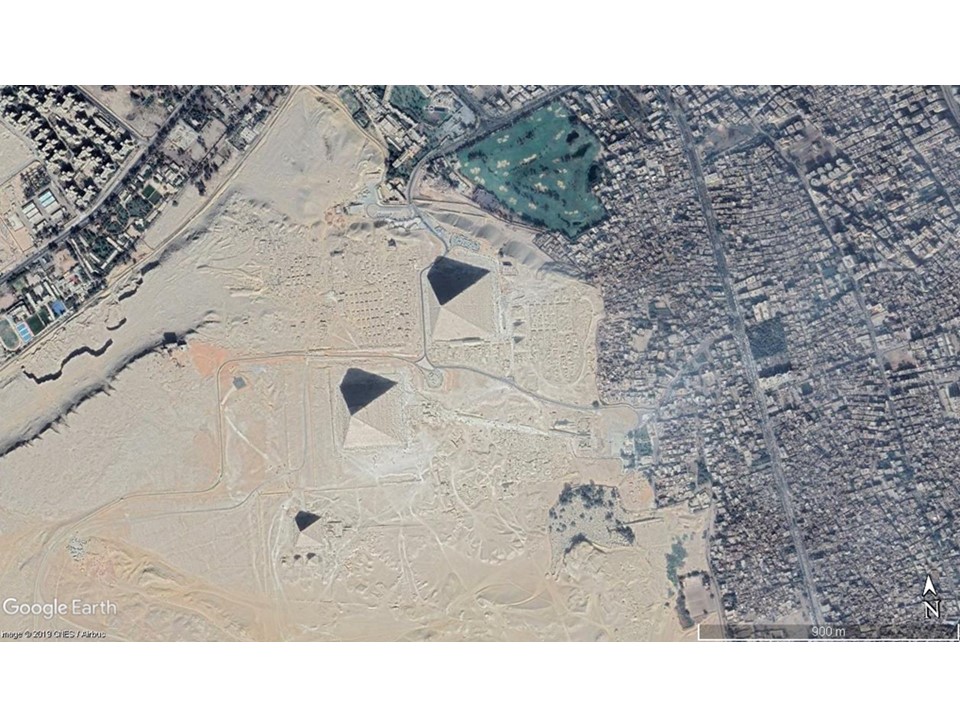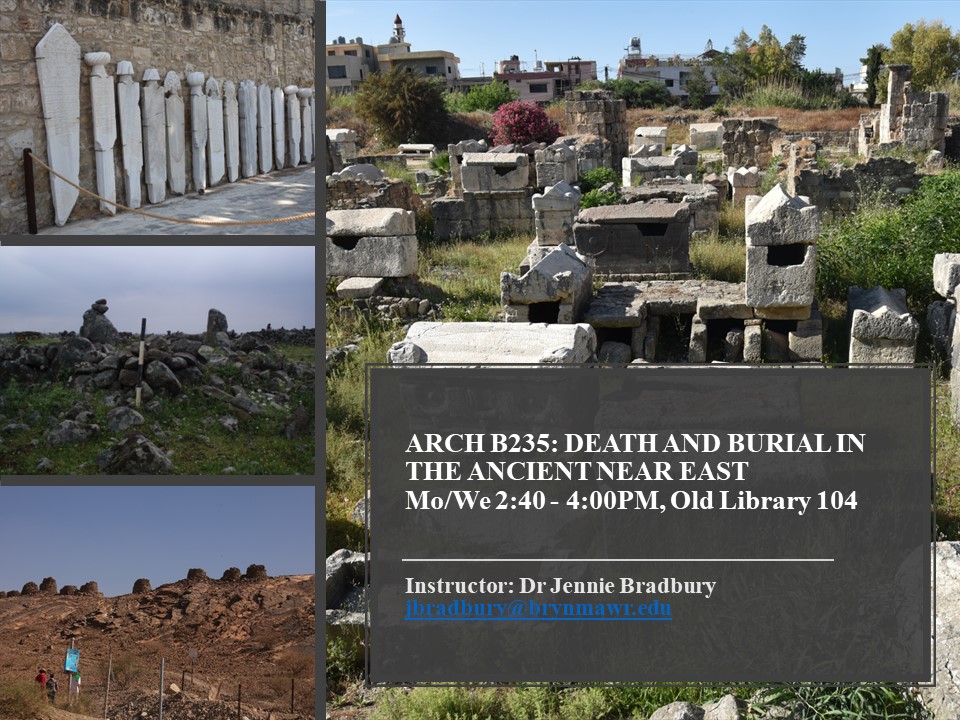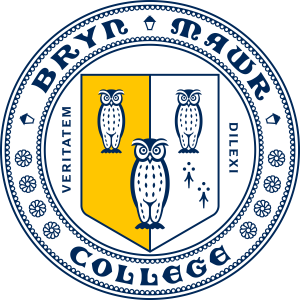
This course introduces the art and archaeology of the ancient Near East and Egypt. Via assigned readings, class work and lectures we will explore some of the most significant archaeological sites, artefacts and societies to have emerged in these regions. We will study the historical figures, societies and cultures that shaped the Near East and Egypt and consider some of the most fundamental inventions and innovations that originated in these areas. Via a variety of case studies, the course will also critically analyse the legacy of antiquarian archaeology in these regions and debate the future of modern archaeology in the area.
- Instructor of record: Jennie Bradbury
- Other editing teacher: Katie Breyer
- Other editing teacher: Jeffrey Cumonow
- Instructor of record: Evrydiki Tasopoulou
- Instructor of record: Evrydiki Tasopoulou

Death is a shared human experience; however, it provokes a huge variety of responses; from the ad hoc and hasty burial of the deceased through to elaborate and lengthy funerary rituals. One of the most direct forms of evidence we have as archaeologists for the people who lived thousands of years ago are burials. The Ancient Near East also offers a rich corpus of textual and visual material, which can be used to explore the ways in which ancient societies conceptualised and thought about death, from the nature of the afterlife to the role of malevolent or helpful ghosts.
- Instructor of record: Jennie Bradbury
This course focuses on the character and consequences of colonization, colonialism, and imperialism in the ancient Mediterranean. Using archaeological and textual evidence, we will examine the history, practice, and physical manifestations of colonization from the earliest Phoenician and Greek colonies through the imperial world of the Roman Empire. We will discuss a variety of approaches and frameworks used to explore the intersection of migration and mobility, colonization and colonialism, and imperial states and identities in the Classical world, and will explore the impact of these processes on the development of wider Mediterranean networks, identities, and histories.
- Instructor of record: Madeleine Glennon
- Instructor of record: Jennifer Swerida
- Instructor of record: Astrid Lindenlauf
- Instructor of record: Shelby Justl
This course will examine two aspects of ancient Egyptian Archaeology. This first is the history of archaeological work in Egypt: tracing methodological developments, the impact of imperialism, colonialism, and race-based theories of the 19th and early 20th centuries on the development of archaeological thought, and where the field of archaeology in Egypt stands today. The second will examine settlements in ancient Egypt - from workmen's villages to planned "temple towns" to "lost cities" - in order to understand the built environment inhabited by the ancient Egyptians. Although the material that the ancient Egyptians used to build their homes, as well as their location in the flood-plain, often makes finding and studying settlements difficult, there are sources of evidence that can help us to rediscover where and how the ancient Egyptians lived, and allow us to reevaluate older theories about ancient Egyptian culture and society.
- Instructor of record: JJ Shirley
- Instructor of record: Astrid Lindenlauf
- Instructor of record: Astrid Lindenlauf
- Instructor of record: Evrydiki Tasopoulou
- Instructor of record: Jennie Bradbury
- Instructor of record: Shelby Justl
This course will examine two aspects of ancient Egyptian Archaeology. This first is the history of archaeological work in Egypt: tracing methodological developments, the impact of imperialism, colonialism, and race-based theories of the 19th and early 20th centuries on the development of archaeological thought, and where the field of archaeology in Egypt stands today. The second will examine settlements in ancient Egypt - from workmen's villages to planned "temple towns" to "lost cities" - in order to understand the built environment inhabited by the ancient Egyptians. Although the material that the ancient Egyptians used to build their homes, as well as their location in the flood-plain, often makes finding and studying settlements difficult, there are sources of evidence that can help us to rediscover where and how the ancient Egyptians lived, and allow us to reevaluate older theories about ancient Egyptian culture and society.
- Instructor of record: JJ Shirley
- Instructor of record: Jennie Bradbury
